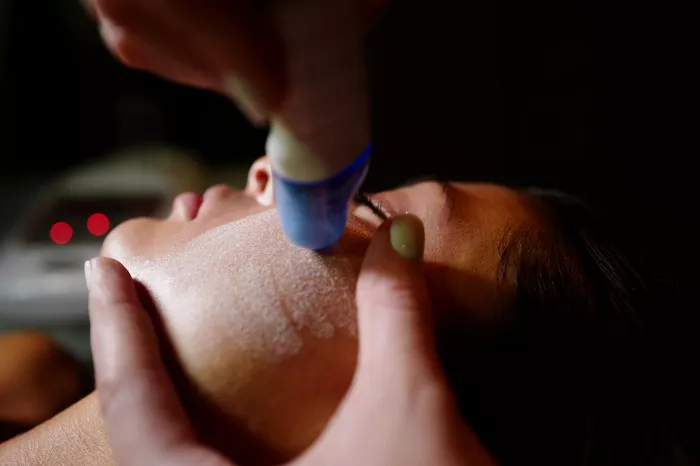Dermaplaning is a popular exfoliation technique used to remove dead skin cells and fine facial hair, commonly known as peach fuzz. This non-invasive procedure helps to achieve smoother, brighter skin and improve the absorption of skincare products. However, many individuals wonder how quickly peach fuzz grows back after dermaplaning and how they can maintain the results of this treatment. In this article, we will delve into the process of peach fuzz regrowth, factors affecting hair growth rate, and essential aftercare tips to prolong the benefits of dermaplaning.
The Process of Dermaplaning
Dermaplaning involves the use of a sterile surgical blade to gently scrape the surface of the skin, removing dead skin cells, dirt, and facial hair. The procedure is typically performed by trained skincare professionals or licensed aestheticians.
The gentle exfoliation not only reveals a smoother complexion but also enhances the effectiveness of skincare products by allowing them to penetrate deeper into the skin.
Peach Fuzz and Its Role in Dermaplaning
Peach fuzz refers to the soft, vellus hair that covers most areas of the face. Unlike coarse terminal hairs (such as eyebrows or scalp hair), peach fuzz is fine and often barely noticeable. This type of hair serves the purpose of regulating body temperature and providing a protective barrier for the skin.
During dermaplaning, the fine facial hair is removed from the surface of the skin. Contrary to a common misconception, removing peach fuzz does not stimulate thicker or darker regrowth; the hair will return with the same texture and color as before.
The Rate of Peach Fuzz Regrowth
The rate at which peach fuzz grows back after dermaplaning varies among individuals. On average, hair regrowth starts within a week or two after the procedure. The new peach fuzz will initially appear shorter and feel softer due to the blunt tip created during dermaplaning. However, over time, the hair will regain its original length and texture.
It is essential to note that hair growth cycles differ for each person, and some individuals may experience faster or slower regrowth than others.
Factors Affecting Hair Growth Rate
Several factors can influence the rate of peach fuzz regrowth after dermaplaning:
a. Genetics: Hair growth patterns are largely determined by genetic factors. Individuals with a genetic predisposition for faster hair growth may experience quicker regrowth.
b. Hormonal Changes: Hormonal fluctuations, such as those during pregnancy or menopause, can affect hair growth rates.
c. Age: Hair growth tends to slow down with age, which may result in slightly slower regrowth after dermaplaning.
d. Health and Nutrition: Adequate nutrition and overall health can impact hair growth rates. A balanced diet and good general health can contribute to faster regrowth.
e. Skincare Routine: Certain skincare products or treatments may affect hair growth. For instance, retinoids or other exfoliating agents might influence the appearance and texture of regrown peach fuzz.
Aftercare Tips for Prolonging Results
To maintain the benefits of dermaplaning and prolong the results, individuals should follow these aftercare tips:
a. Sun Protection: After dermaplaning, the skin may be more sensitive to the sun. Apply a broad-spectrum sunscreen with SPF 30 or higher to protect the skin from harmful UV rays and prevent sun-induced hyperpigmentation.
b. Gentle Skincare: Avoid using harsh or abrasive skincare products immediately after dermaplaning, as the skin may be more susceptible to irritation. Stick to gentle, hydrating cleansers and mild exfoliants if necessary.
c. Moisturize: Keeping the skin well-hydrated is essential for maintaining its suppleness and promoting healthy regrowth of peach fuzz.
d. Avoid DIY Dermaplaning: While dermaplaning is a safe procedure when performed by professionals, attempting it at home without proper training can lead to injury or damage to the skin.
e. Follow Professional Recommendations: Skincare professionals will provide personalized aftercare instructions based on an individual’s skin type and condition. Adhering to these recommendations can optimize the results of dermaplaning.
Frequency of Dermaplaning Treatments
The recommended frequency of dermaplaning treatments varies depending on individual skin concerns and goals. As a general guideline, many individuals opt for dermaplaning every three to four weeks to maintain smooth and radiant skin.
However, the frequency may be adjusted based on factors such as the rate of peach fuzz regrowth, skin sensitivity, and the presence of other skin concerns like acne or hyperpigmentation.
Consulting a Skincare Professional
Before undergoing dermaplaning or any skincare procedure, it is crucial to consult with a licensed skincare professional or dermatologist. They will assess an individual’s skin condition, discuss their goals, and determine the most suitable treatment plan. A skincare professional can also provide valuable insights on aftercare and answer any questions regarding peach fuzz regrowth and maintaining results.
Conclusion
Dermaplaning is an effective exfoliation technique that not only removes dead skin cells but also fine facial hair or peach fuzz. The process reveals smoother, brighter skin and enhances the absorption of skincare products. The rate of peach fuzz regrowth after dermaplaning varies among individuals, but on average, regrowth begins within a week or two after the procedure. Following proper aftercare tips, including sun protection, gentle skincare, and regular moisturization, can help prolong the results and maintain smooth, radiant skin. Consulting with a skincare professional before and after dermaplaning is essential to receive personalized guidance and ensure the best possible outcomes in achieving a refreshed and glowing complexion.


